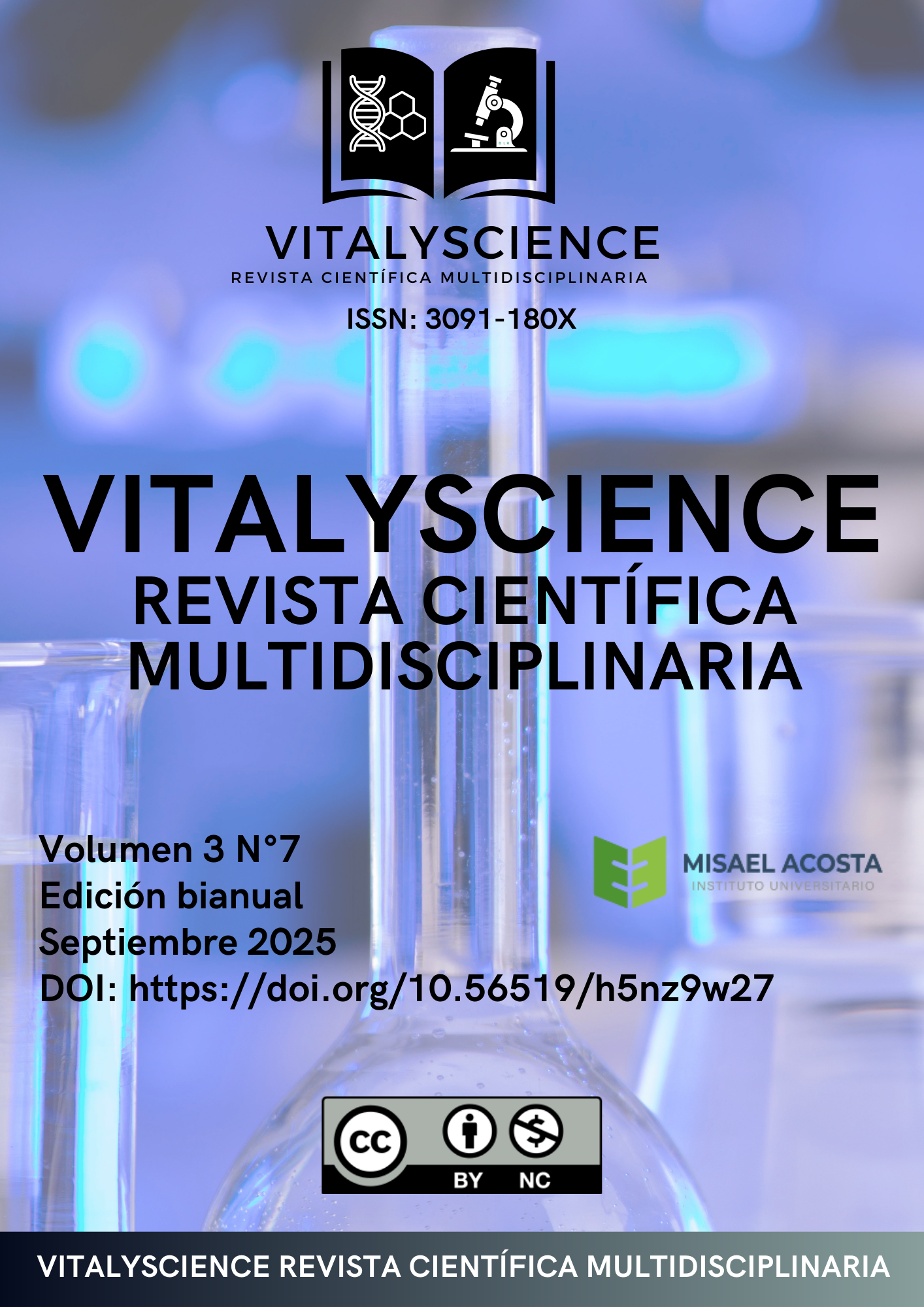HACIA UN DIAGNÓSTICO TEMPRANO DE LA PREECLAMPSIA: AVANCES Y PERSPECTIVAS EN BIOMARCADORES PREDICTIVOS
DOI:
https://doi.org/10.56519/kmczyk10Palabras clave:
Preeclampsia, biomarcadores, ómicas, angiogénicos, biomarkers,, omics, angiogenicsResumen
La preeclampsia continúa siendo una de las principales causas de morbilidad y mortalidad materna y perinatal a nivel mundial. El diagnóstico temprano es fundamental para mejorar los desenlaces clínicos. El objetivo de esta revisión fue analizar los avances recientes en la detección oportuna de la preeclampsia, con énfasis en el papel de los biomarcadores predictivos. S El diseño correspondió a una revisión sistematizada de la literatura (enfoque scoping review) realizada entre 2015 y 2025, siguiendo lineamientos PRISMA-ScR/JBI. Se realizó una búsqueda en bases de datos científicas (PubMed, Orphanet, Scopus) y en guías internacionales (FIGO, ACOG, OMS) entre 2015 y 2025. En total, se incluyeron 19 documentos (17 artículos y 2 guías) y se excluyeron 13 por no cumplir criterios o por duplicidad. Los resultados evidencian que los biomarcadores angiogénicos, particularmente la relación sFlt-1/PlGF, constituyen la herramienta más prometedora para la predicción temprana. Los biomarcadores inflamatorios, inmunológicos, metabólicos y oxidativos aportan información fisiopatológica, pero carecen de especificidad diagnóstica. Los biomarcadores genéticos y epigenéticos, incluyendo microRNAs y polimorfismos genéticos, se perfilan como candidatos en investigación con potencial aplicabilidad futura. Finalmente, los modelos combinados (biomarcadores - Doppler - factores clínicos) ofrecen el mayor rendimiento predictivo y cuentan con el respaldo de las principales sociedades internacionales. En conclusión, la integración de biomarcadores angiogénicos con herramientas clínicas y de imagen representa la estrategia más sólida para avanzar hacia un diagnóstico temprano de la preeclampsia. La investigación futura deberá centrarse en validar biomarcadores emergentes y adaptar los modelos predictivos a diferentes contextos poblacionales, con el fin de reducir la carga global de esta enfermedad.
Abstract
Preeclampsia remains one of the leading causes of maternal and perinatal morbidity and mortality worldwide. Early diagnosis is essential to improve clinical outcomes. This review aimed to examine recent advances in the timely detection of preeclampsia, with a focus on the role of predictive biomarkers. We conducted a systematized literature review (scoping review) from 2015 to 2025, guided by PRISMA-ScR/JBI. A search was conducted in scientific databases (PubMed, Orphanet, Scopus) and international guidelines (FIGO, ACOG,WHO) covering the period from 2015 to 2025. Overall, 19 documents were included (17 research articles and 2 guidelines), and 13 records were excluded due to duplications or not meeting eligibility criteria. The outcomes demonstrate that the angiogenic biomarkers particularly the sFlt-1/PlGF ratio stand out as the most encouraging tool for early prediction. Inflammatory, immunological, metabolic and oxidative biomarkers provide insight into pathophysiology but lack diagnostic specificity. Genetic and epigenetic markers, such as microRNAs and genetic polymorphisms, are arising as research candidates with potential for future clinical application. Finally, the combined models (biomarkers-Doppler-clinical factors) offer the highest predictive performance and are supported by the main international societies. In conclusion, merging angiogenic biomarkers with clinical and imaging tools represents the strongest strategy for advancing early detection of preeclampsia. Further research should emphasize validating emerging biomarkers and adapting predictive models to diverse populations in order to help reduce the global burden of this condition.







